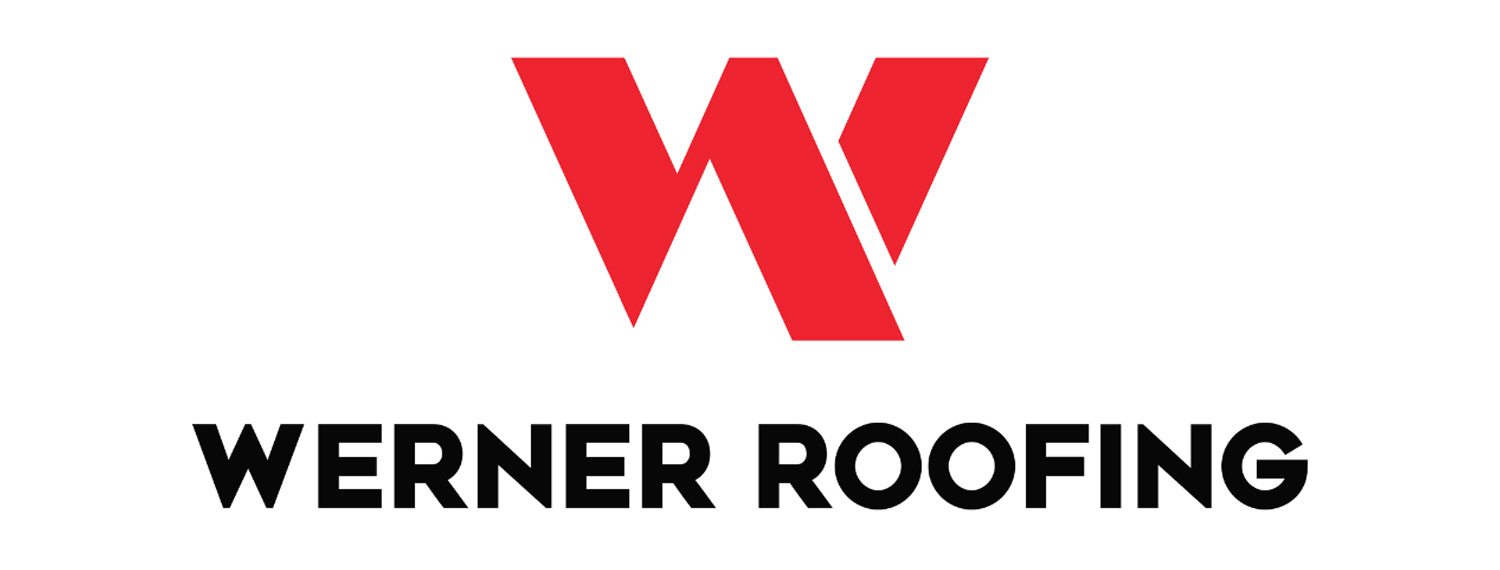
by elizabeth@evenbound.com | Dec 22, 2025 | Roof Damage, Roof Maintenance, Roof Repair, Roof Replacement, West Michigan Roofing Blog
If you’re a Michigan homeowner, one of the most common questions you may find yourself asking is: “How long does a roof last in Michigan?”
It’s a valid question, especially in a state where your roof takes a beating from lake-effect snow, heavy winds, rapid freeze-thaw cycles, and year-round temperature swings.
The short answer? Most roofs in Michigan last between 15–30 years, depending on the roofing material, installation quality, attic ventilation, and the amount of weather exposure your home receives.
This guide breaks down the expected lifespan of each roofing material, explains how Michigan’s weather affects longevity, and highlights the key warning signs that your roof may be nearing the end of its life.
With this information, you’ll know what to expect and how to plan ahead before minor issues turn into costly repairs.
How Long Does a Roof Last in Michigan?
Most roofs in Michigan last 15–30 years, depending on the material, installation quality, ventilation, and the amount of weather exposure the home receives.
Because Michigan experiences harsh winters, heavy lake-effect snow, and dramatic freeze-thaw cycles, roofs in this region often age 5–10 years faster than they would in warmer climates.
Roof Lifespans by Material: What Michigan Homeowners Can Expect
Michigan’s climate plays a major role in how long each roofing material lasts.
Here’s a breakdown of what homeowners can typically expect, plus how local weather impacts performance.
| Quick Reference: Michigan Roof Lifespan Comparison Table |
| Roofing Material |
Typical Michigan Lifespan |
Key Factors That Impact Longevity |
| Asphalt Shingles |
15–20 years |
Heavy snow load, granule loss, freeze–thaw cycling |
| Architectural Shingles |
20–30 years |
Proper attic ventilation, winter moisture exposure |
| Metal Roofing |
40–70 years |
Excellent snow shedding, wind resistance, and rust protection |
| Cedar Shake |
20–30 years |
Moisture retention requires ongoing maintenance |
| Flat Roofs (EPDM, TPO, PVC) |
20–30 years |
Ponding water, membrane cracking in cold temperatures |
Asphalt Shingle Roof: 15–20 Year Lifespan in Michigan
Asphalt shingles are the most common roofing material in West Michigan, but they’re also the most vulnerable to heavy snow loads and granule loss during winter storms.
Over time, the constant freeze-thaw cycle accelerates cracking and curling, shortening their lifespan.
Learn more: How Long Do Roof Shingles Last?
Architectural Shingles: 20–30 Year Lifespan in Michigan
Architectural shingles are thicker and more durable than standard asphalt shingles. They offer better protection against wind and weather.
Still, proper attic ventilation is crucial. Without it, Michigan’s moisture-heavy winters can cause premature aging.
Metal Roof: 40–70 Year Lifespan in Michigan
Metal roofing performs exceptionally well in Michigan. It sheds snow easily, resists rot, and withstands wind and temperature swings far better than shingles.
If you’re wondering how long a metal roof lasts, the answer is: a very long time — often several decades with minimal maintenance.
Cedar Shake Roof: 20–30 Year Lifespan in Michigan
Cedar shake roofs bring warmth and character to a home, but they require more upkeep in Michigan’s humid summers and snowy winters.
Moisture retention can shorten the lifespan, unless the roof is well-maintained.
Flat & Low-Slope Roofs (EPDM, TPO, PVC): 20–30 Year Lifespan in Michigan
Flat roofing systems are standard for additions, porches, and certain architectural styles.
In Michigan, these roofs face challenges like ponding water, membrane cracking in cold temperatures, and ice formation around drainage points.
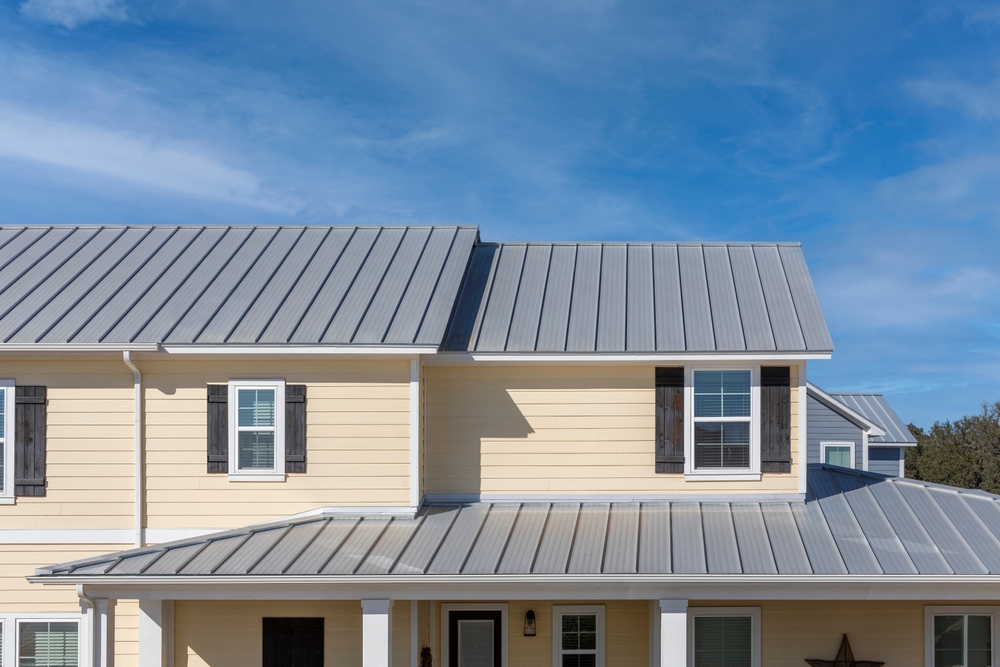
What Shortens Roof Lifespan in Michigan?
Michigan’s climate is one of the primary factors influencing the lifespan of a roof. Even high-quality materials can wear out faster here due to constant exposure to harsh, shifting weather patterns.
Homes along the Lake Michigan shoreline often experience stronger wind gusts and heavier lake-effect snow, while inland and East Michigan homes see more rapid temperature swings. These microclimates can affect roof aging differently depending on where you live.
Here are the most common Michigan-specific conditions that shorten roof lifespan:
| 6 Factors That Affect Michigan Roofs’ Lifespans |
| Lake-Effect Snow |
- Heavy, wet snow adds significant weight to your roof and increases the exposure to moisture.
- Over time, this extra load can weaken shingles, flashing, and decking.
|
| Freeze-Thaw Cycles |
- West Michigan can jump from freezing to above-freezing temperatures in a single day.
- These rapid swings cause shingles to expand and contract repeatedly, leading to cracks and loosening.
|
| High Winds Off Lake Michigan |
- Gusty winds can lift shingles, break seals, loosen flashing, and expose your roof to water intrusion — especially on older roofs.
|
| Ice Dams |
- When melting snow refreezes at the roof’s edge, it traps water behind it.
- That trapped water can seep under shingles, damaging the roof deck and creating leaks inside your home.
|
| Poor Attic Ventilation |
- Without proper ventilation, heat and moisture build up in the attic.
- This accelerates shingle aging, encourages mold growth, and can even cause structural issues over time.
|
Note: If you notice wear on your asphalt shingles, consider our roof repair and replacement services.
7 Signs Your Roof Might Be Near the End of Its Lifespan
Even if your roof hasn’t quite reached its expected lifespan, Michigan’s weather can speed up wear and tear.
If you start noticing any of these issues, it’s a good idea to schedule a professional inspection before minor problems turn into major repairs:
1. Curling, Cracked, or Missing Shingles
Shingles that are warped or falling off signal that the protective layers are breaking down, often accelerated by freeze-thaw cycles and high winds.
2. Granules Collecting in Gutters
If your gutters look sandy or filled with dark granules, your shingles are wearing out. This is a common early warning sign in Michigan, often caused by heavy snow and ice friction.
3. Frequent Ice Dams Every Winter
Ice dams are a red flag for ventilation or insulation issues and can indicate that your roof is struggling to maintain proper thermal balance.
4. Dark Streaks, Algae, or Moss Growth
West Michigan’s humidity fuels algae and moss, which hold moisture against the roof and speed deterioration.
5. Sagging Areas or Soft Spots
Sagging can indicate structural weakening beneath the shingles, often caused by prolonged exposure to moisture.
6. Water Stains on Ceilings or Attic Moisture
Roof leaks don’t always start as dripping water. Early signs include discoloration, musty smells, or damp insulation.
7. Uneven Snow Melt Patterns
If parts of your roof melt faster than others, it could mean that heat is escaping through worn shingles or inadequate insulation — a common warning sign of Michigan winter.
Note: If you’re experiencing any of these issues, schedule a free inspection with our team so we can assess your roof before winter weather exacerbates the damage.
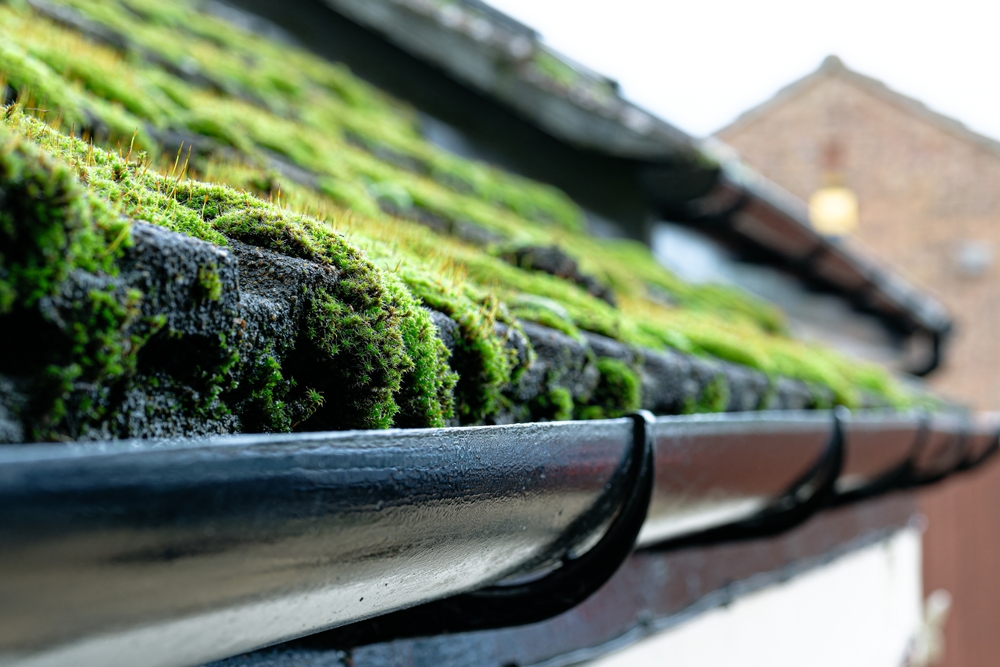
FAQs: Michigan Roof Lifespan & Replacement
Q. Can winter weather permanently damage a roof?
A. Yes. Ice dams, heavy snow, high winds, and freeze-thaw cycles can cause long-term issues like cracking, moisture intrusion, and structural weakening.
Q. How often should my roof be inspected in Michigan?
A. Once a year is ideal, preferably in spring or fall. Regular inspections help catch winter damage early and prevent costly repairs.
Q. Is it better to replace a roof in winter or wait until spring?
A. Many Michigan roofing contractors (including Werner Roofing) can install roofs year-round, depending on temperature and weather conditions. Winter replacements are possible, but spring and fall typically offer the best conditions.
Q. How do I know if my roof needs to be repaired or replaced?
A. If damage is widespread, the roof is nearing the end of its expected lifespan, or you’re noticing recurring issues like leaks or ice dams, roof replacement is often more cost-effective than ongoing repairs.
Michigan Weather Is Tough — But Your Roof Should Be Tougher
Staying proactive is the best way to extend your roof’s lifespan and protect your home in the long term.
At Werner Roofing, we specialize in roofs designed for Michigan’s unique weather conditions. Our team delivers trusted local expertise, award-winning service, and year-round installation so your home stays protected no matter the season.
Ready to make sure your roof is built for Michigan’s toughest winters?
Contact Werner Roofing today to schedule a free inspection or request a quote.
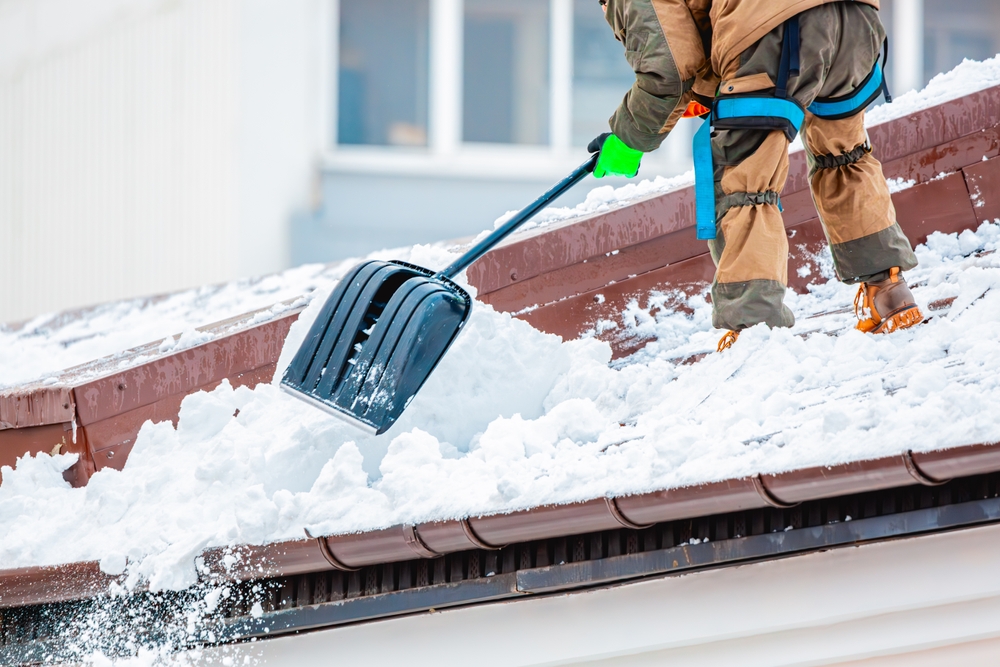
by elizabeth@evenbound.com | Oct 29, 2025 | Roof Damage, Roof Maintenance
If you live in Grand Rapids, you know winter doesn’t mess around. Heavy lake effect snow, freezing temperatures, and high winds can put even the best roofs to the test.
As a roofing professional, I’ve seen how quickly a beautiful blanket of snow can cause ice dams, leaks, or worse—structural roof damage.
That’s why taking a few preventative steps before the snow starts flying is so important. Below, I’ll explain what makes lake effect snow so tough on your roof, what risks to watch for, and what you can do to keep your home protected all winter long.
Understanding the Lake Effect Snow in Grand Rapids
Lake effect snow happens when cold air passes over Lake Michigan’s warmer waters. The lake adds moisture to the air, dumping heavy, wet snow once it hits land. This is especially common here in West Michigan.
Did you know? Unlike light, powdery snow, lake effect snow is dense and water-heavy. That extra weight adds stress to your roof and can speed up ice dam formation, especially if your attic isn’t properly insulated or ventilated.
The result? Melted snow can refreeze at the roof’s edge, blocking proper drainage and forcing water under your shingles.
The Risks Snow and Ice Pose to Roofs
Snow may look harmless, but it brings several hidden dangers:
- Ice dams and leaks: Melted snow that refreezes can back up under shingles, causing water intrusion.
- Shingle damage: The freeze-thaw cycle can crack or loosen shingles.
- Excess weight: Too much snow buildup can lead to sagging or even structural strain.
- Mold and mildew: Moisture trapped under shingles or in attics can cause long-term indoor issues.
These problems often start small—but if ignored, they can become expensive repairs by midwinter.
3 Roof and Snow Safety Tips for the Michigan Lake Effect
1. Preventive Roof Maintenance Before Winter
A little fall roof maintenance goes a long way in preventing winter headaches:
- Clean your gutters so melting snow and ice have a clear path to drain. Clogged gutters trap water that can freeze and push under shingles.
- Check your shingles and flashing. Damaged or missing pieces create easy entry points for water.
- Inspect attic insulation and ventilation. Proper airflow keeps your roof’s surface cold, reducing the chance of ice dams.
If you’re uncomfortable doing these checks yourself, schedule a free professional inspection with Werner Roofing. We’ll make sure your roof, flashing, and gutters are winter-ready.
2. Safe Snow Removal Practices
It’s tempting to climb up there and clear your roof after a heavy snowfall—but please, don’t. Walking on icy shingles is one of the most dangerous winter tasks a homeowner can attempt.
Instead:
- Use a roof rake with a long extension handle to pull down excess snow safely from the ground.
- Focus on clearing the first few feet above the gutters to help prevent ice dams.
- As a rule of thumb, if snow buildup exceeds 6 inches of dense, wet snow, it’s worth removing.
- If the accumulation is heavy or hard to reach, call a professional. It’s safer and often more affordable than repairing roof damage later.
3. Spotting Warning Signs of Trouble
Keep an eye out for these early indicators that your roof may be struggling:
- Large icicles along the eaves
- Water stains on ceilings or upper walls
- Sagging rooflines or dips in the structure
- Persistent ice dams in the same areas after each snowfall
Catching these warning signs early can save you thousands in repairs.
Why Professional Help Matters
Even if you’re diligent about roof maintenance, Michigan winters can still throw surprises your way. Professional roofers have the right tools, safety equipment, and experience to handle those challenges safely and effectively.
At Werner Roofing, we’ve helped thousands of West Michigan homeowners prepare for (and recover from) harsh lake effect conditions. Our team knows what to look for, from minor flashing gaps to hidden moisture damage, and we’ll help you address issues before they escalate.
Preventive care is always more affordable than emergency repair. A quick inspection now can mean a dry, stress-free winter later.
Don’t Wait Until It’s Too Late, We’re Here To Help
Once the snow hits, it’s too late to fix what’s underneath. If you haven’t had your roof inspected this year, now’s the time!
Schedule your free roof inspection today with Werner Roofing and head into winter knowing your home is protected from whatever lake effect snow brings.
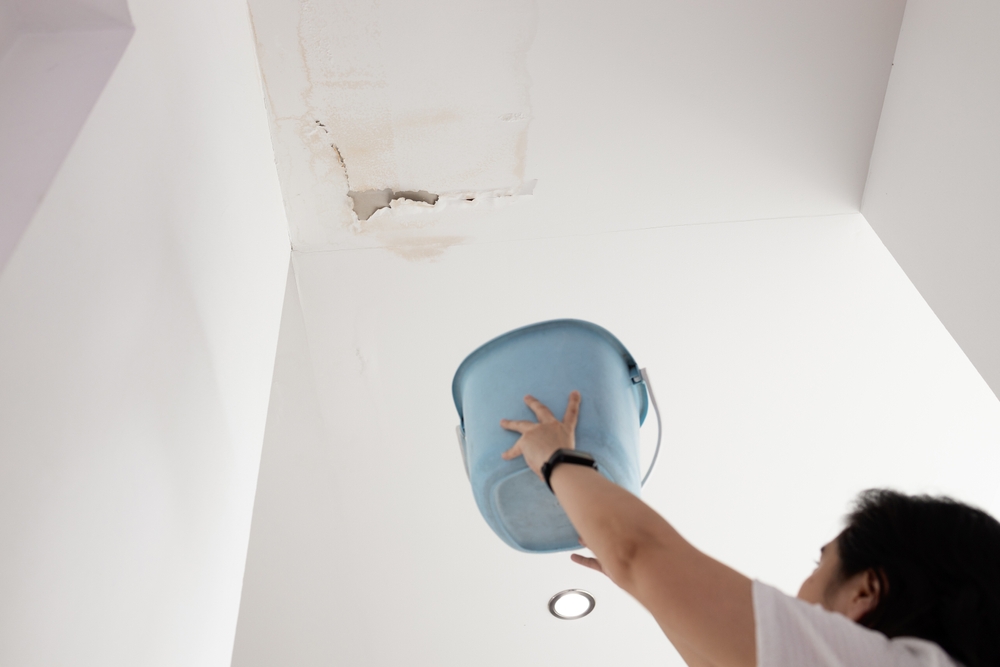
by elizabeth@evenbound.com | Sep 19, 2025 | Roof Damage, Roof Repair
Your roof does more than just keep the rain out—it’s a complex system designed to direct water safely away from vulnerable areas. One of the most important components of a roof system is roof flashing. These thin strips of metal are installed around chimneys, skylights, vents, and roof valleys to seal joints and keep water from seeping inside.
If flashing is damaged, poorly installed, or worn down over time, it can quickly lead to roof leaks, water damage, and even structural issues. If left unchecked, a small gap can become a costly problem for your home.
In this blog, we’ll explain what roof flashing is and why it matters, walk through five common causes of flashing damage, share the key signs it’s time for a repair, and show why trusting a professional is the best way to protect your investment.
What Is Roof Flashing and Why Does It Matter?
Roof flashing is one of those roofing components you rarely notice but can’t live without. It’s made of thin metal pieces (usually aluminum, copper, or galvanized steel) installed in critical areas where your roof meets other structures, like chimneys, skylights, vents, and valleys.
Flashing directs water away from vulnerable joints and openings. Without it, rainwater and melting snow could easily sneak under your shingles, seep into your roof deck, and cause leaks, mold, and structural deterioration.
Think of flashing as your roof’s line of defense against water damage. When it’s properly installed and maintained, flashing protects your home’s integrity. But your entire roof system can be at risk when missing, damaged, or corroded.
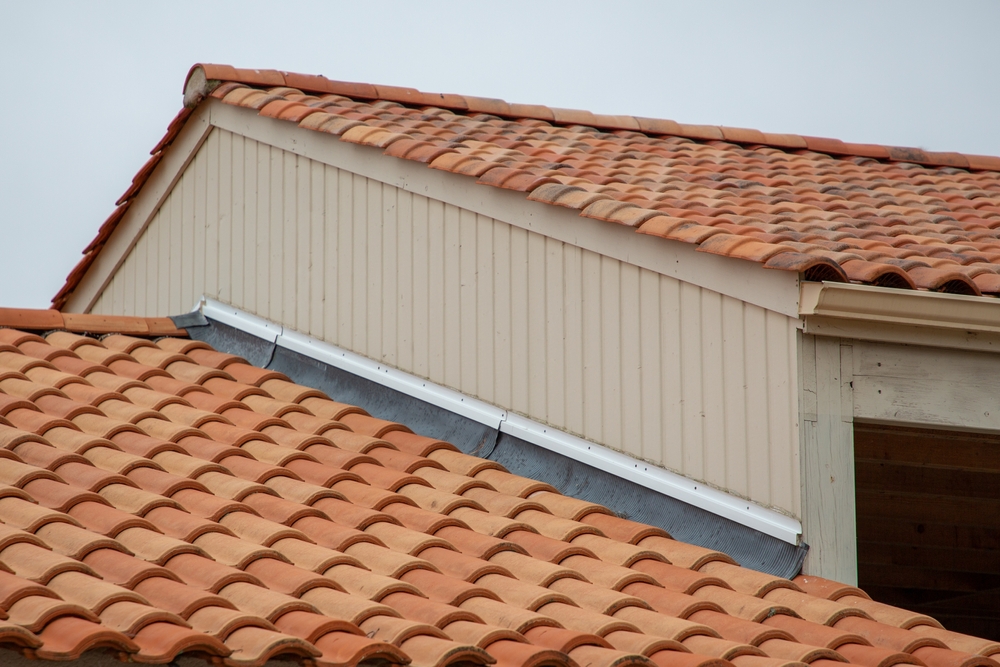
5 Common Causes of Roof Flashing Damage
Even the best roofing materials don’t last forever, and flashing is no exception. Here are some of the most common reasons flashing can fail:
1. Weather Exposure
High winds, heavy rain, snow, and hail can loosen, dent, or tear flashing. Over time, repeated exposure to Michigan’s unpredictable weather weakens its protective seal.
2. Poor Installation
Water can sneak through gaps if flashing is not aligned correctly or sealed. This is one of the leading causes of premature roof leaks, especially around chimneys and skylights.
3. Corrosion or Material Wear
Metal flashing can rust, corrode, or deteriorate with age. Once weakened, it loses its ability to keep water out.
4. Roof Movement
Your roof naturally expands and contracts with temperature changes. This shifting can cause flashing to pull away from its seal, leaving vulnerable gaps behind.
5. Storm Damage
Severe storms can knock debris into your roof, while ice dams in the winter can lift or bend flashing out of place. Both create opportunities for water intrusion.
Signs You May Need Roof Flashing Repair
Because flashing is tucked away at roof joints and edges, it’s not always easy to spot when it’s failing. Still, there are some clear warning signs homeowners can watch for:
- Water stains on ceilings or walls — often the first visible clue that water is sneaking past your roof’s defenses.
- Dampness or leaks near chimneys, vents, or skylights — prime spots where flashing plays a critical role.
- Loose, bent, or visibly damaged flashing — if you can see it from the ground or during a roof inspection, it’s time to act.
- Mold or mildew growth in the attic — moisture buildup often traces back to flashing issues.
- Persistent roof leaks after storms — if problems continue even after patching shingles, flashing may be the culprit.
Catching these issues early can mean the difference between a simple flashing repair and a major roof replacement.
How Does Roof Flashing Repair Work?
When flashing fails, it’s vital to repair it correctly to restore your roof’s watertight seal. Here’s what the typical repair process looks like:
- Inspection – A roofing professional will carefully inspect your roof to pinpoint problem areas and assess the extent of the damage.
- Removal of Damaged Flashing – Old or deteriorated flashing is removed to make way for a secure replacement.
- Surface Preparation – The area is cleaned and prepped to ensure the new flashing bonds properly and creates a lasting seal.
- Installation of New Flashing – Fresh flashing is fitted and sealed into place with high-quality materials designed to withstand the elements.
While it may be tempting to attempt a DIY fix, flashing repair is best left to the professionals. Improper installation can make leaks worse, compromise your roof warranty, and put your safety at risk.
Why Professional Roof Flashing Repair Is Worth It
Cutting corners on flashing repair isn’t worth the risk when protecting your home. Here’s why hiring a professional roofing contractor pays off:
- Expertise in spotting hidden damage – Professionals know where to look and can uncover problems you might miss.
- Proper installation with quality materials – Roofers use flashing to withstand Michigan’s harsh weather, ensuring long-term protection.
- Repairs that prevent future leaks – Correctly installed flashing not only fixes current issues but also safeguards against future water intrusion.
- Cost savings in the long run – Investing in professional repairs now can save you thousands by preventing structural damage, mold, and premature roof replacement.
A reliable roofing expert doesn’t just repair the flashing — they protect the entire system that keeps your home safe and dry.

Protect Your Home With Expert Roof Flashing Repair from Werner Roofing
At Werner Roofing, our team has the experience and expertise to diagnose flashing issues, repair them properly, and give you peace of mind that your home is protected against the elements.
If you’ve noticed any signs of roof flashing damage, contact Werner Roofing today for a free inspection and expert repair you can trust.
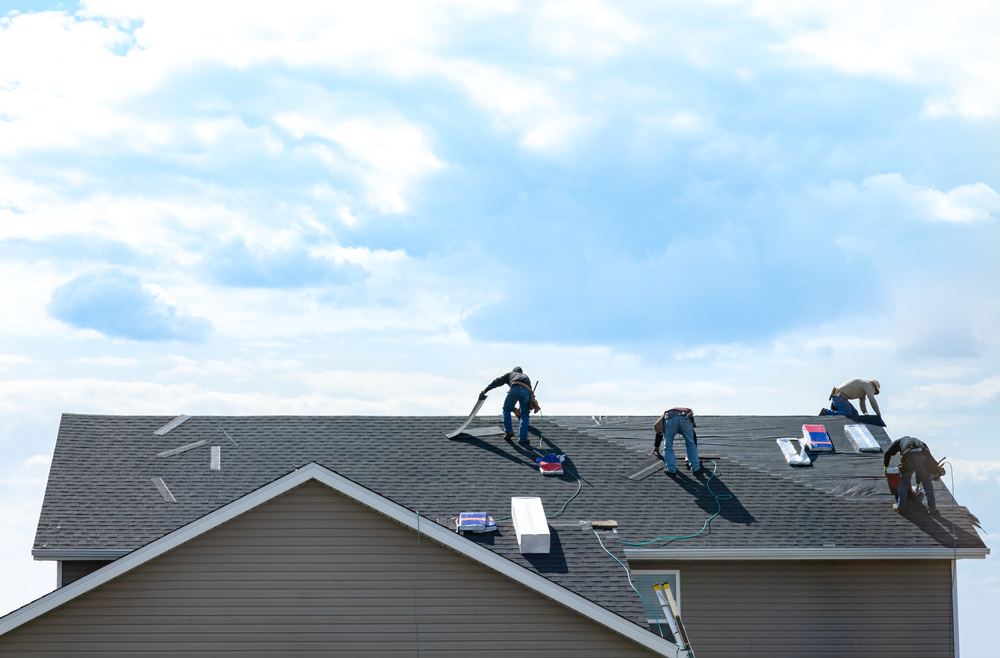
by elizabeth@evenbound.com | Aug 28, 2025 | Roof Repair, Shingling
In West Michigan, your roof takes a beating from heavy snow, pounding rain, and high winds. For homeowners and property managers in Holland, MI, keeping your shingle roof in good shape isn’t just about curb appeal—it’s about protecting your property from costly damage.
The good news? Spotting early warning signs can save you thousands in repairs down the road. From missing shingles to water stains inside your home, knowing what to look for helps you take action before small problems turn into major structural issues.
The Top 5 Signs It’s Time to Call a Pro for Roofing Shingle Repair
We’ll cover the five most common signs that it’s time to call a professional for shingle roof repair in Holland, MI—and why addressing them quickly is the best move you can make.
1. Missing or Cracked Shingles
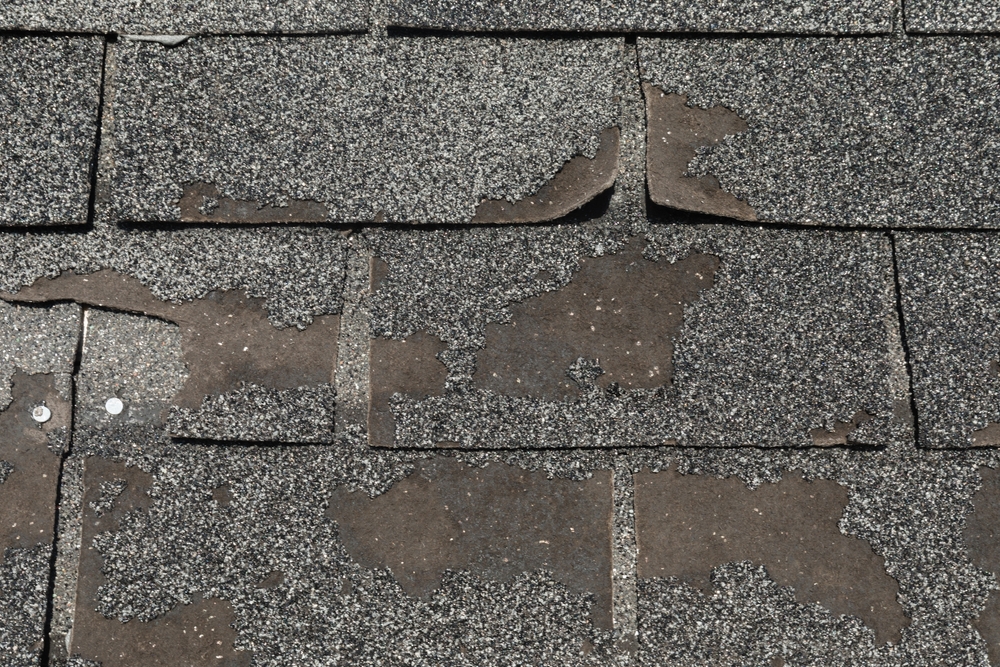
Shingles are your roof’s first line of defense. When they’re damaged or missing, it leaves your roof vulnerable to water and structural damage.
Common causes of shingle damage include:
- Severe weather – high winds, heavy snow, hail, or ice
- Aging materials – shingles naturally weaken over time
- Improper installation – can cause premature cracking or lifting
Why it matters:
- Exposes the roof deck to moisture
- Increases the risk of leaks and rot
- Can shorten your roof’s overall lifespan
What to do: If you spot shingles that are curled, cracked, or missing altogether, don’t wait. Call a professional roofer to repair or replace them before the problem spreads.
2. Granule Accumulation in Gutters
Shingle granules protect your roof from UV rays and water damage. If you’re finding a lot of them in your gutters, it’s a red flag.
Why granules matter:
- Provide a protective coating on shingles
- Help prevent sun damage and cracking
What granule buildup means:
- Shingles are aging and losing effectiveness
- Roof protection is compromised
- The lifespan of your roof may be nearing the end
What to do: Schedule an inspection if your gutters are filling with granules after every storm.
3. Leaks and Water Stains Indoors
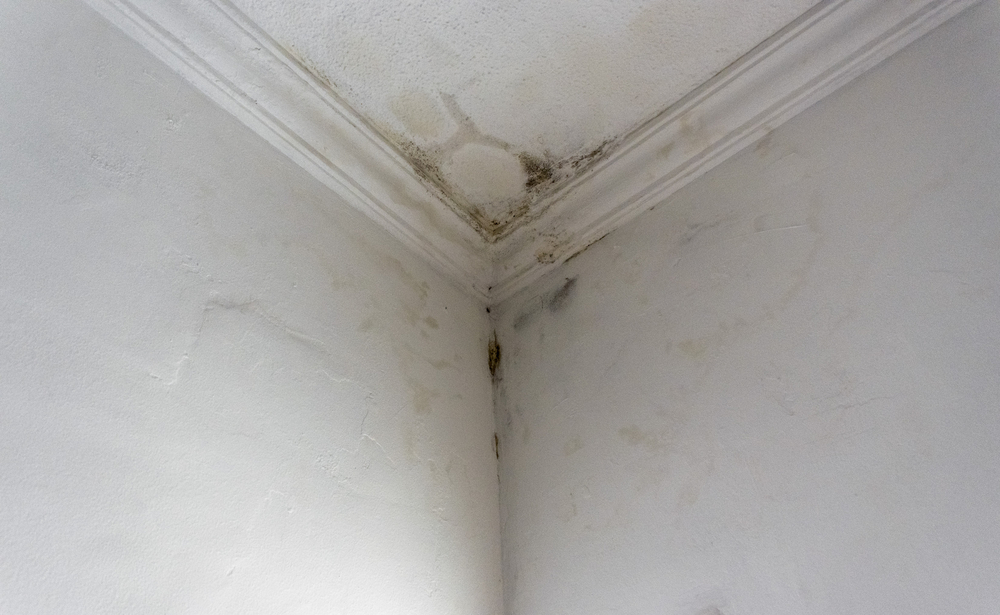
Water spots inside your home often point to roofing issues above.
Warning signs indoors:
- Brown or yellow ceiling stains
- Peeling paint or bubbling drywall
- Damp walls or musty odors
Why it matters:
- Even small leaks can lead to hidden mold growth
- Structural framing can weaken over time
- Repairs become more expensive the longer you wait
What to do: If you notice leaks or stains, call in a roofing professional right away to prevent further damage.
4. Damaged or Failing Flashing
Flashing seals vulnerable areas like chimneys, vents, and skylights.
Common issues with flashing:
- Corrosion or rust
- Cracks from temperature changes
- Poor installation or previous patchwork repairs
Why it matters:
- One of the top sources of roof leaks
- Allows water to penetrate around openings
- Can cause hidden interior water damage
What to do: Have damaged flashing repaired or replaced by a roofing expert to keep water out.
5. Sagging or Uneven Rooflines
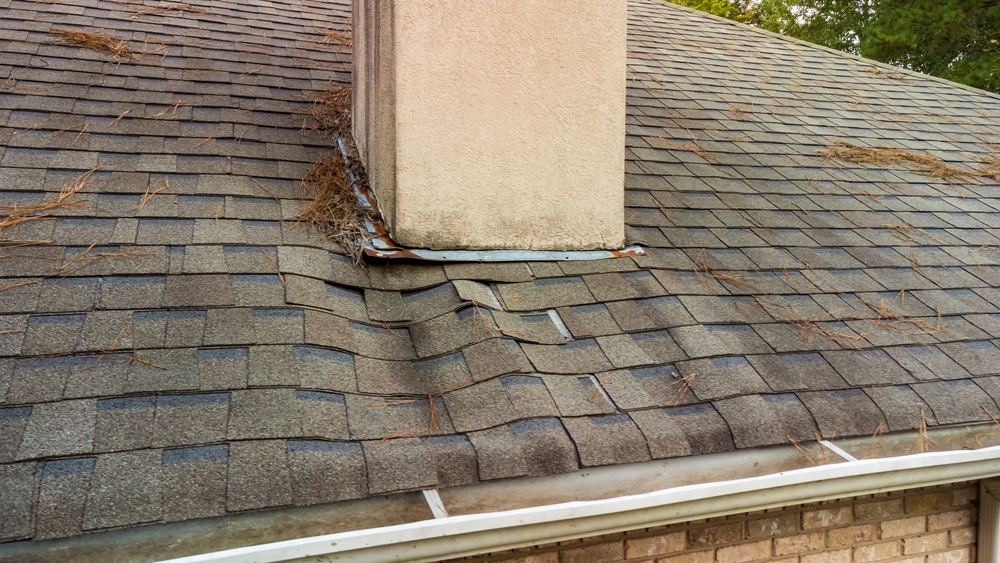
A roof should look straight and solid. If it appears uneven, you may be facing serious issues.
Possible causes:
- Waterlogged roof decking
- Compromised structural supports
- Long-term moisture exposure
Why it matters:
- Signals advanced roof damage
- Can compromise the safety of your home
- Requires immediate professional evaluation
What to do: Sagging roofs are a red flag—don’t delay calling a contractor.
When to Call a Roofing Expert in Holland, MI
While some homeowners may attempt DIY repairs, roofing issues are best left to professionals. A local contractor understands Holland’s unique weather challenges and building codes, ensuring repairs are done right the first time.
Werner Roofing has years of experience helping homeowners in Holland with expert shingle roof repair and replacement. From minor fixes to complete roof restorations, our team is here to protect your home and give you peace of mind.
Werner Roofing: Holland’s Trusted Shingle Repair Team
If you’ve noticed any warning signs, don’t wait—your roof won’t fix itself. The trusted team at Werner Roofing has a local office located in Holland and can easily come take a look.
Contact Werner Roofing today to schedule a free inspection and expert shingle roof repair in Holland, MI.

by elizabeth@evenbound.com | Apr 7, 2025 | Gutter Maintenance, Gutter Systems
Let’s talk about gutter maintenance. It’s one of those chores no homeowner enjoys. Climbing a ladder to scoop out wet leaves and debris is inconvenient, messy, time-consuming, and dangerous. That’s why so many homeowners ask the same question: Do gutter guards work?
In this blog, we’ll explain everything you need to know about gutter guards, including how they work, their benefits and potential drawbacks, and how to choose the best type for your home. If you’re considering investing in gutter protection, this guide will help you decide.
How Do Gutter Guards Work?
Gutter guards are protective covers that go over gutters to help keep out leaves, twigs, and other debris while still allowing rainwater to flow freely through the system.
So, how do gutter guards work? The concept is simple: By blocking larger debris from entering gutters, they reduce the chance of clogs, backups, and overflow.
There are several types of gutter guards on the market, including:
- Screen and mesh guards – Use a fine metal or plastic mesh to filter out debris.
- Micro-mesh guards – Feature an even finer mesh for more precise filtration.
- Surface tension (or reverse curve) systems – Direct water into the gutter while debris slides off.
- Foam and brush inserts – Sit inside the gutter to block debris while allowing water to pass through.
We install two of the most trusted and effective systems available at Werner Roofing: LeafSlugger Micro and Gutterworks gutter guards. These products are designed to fit seamlessly into your existing gutters and offer long-lasting protection without compromising the look of your home. They’re durable, low-maintenance, and built to perform in West Michigan’s ever-changing weather.
5 Benefits of Gutter Guards
Installing gutter guards offers several advantages for homeowners — especially in areas like West Michigan, where changing seasons and falling leaves can quickly clog up your gutters.
Here are some of the top benefits of gutter guards:
1. Less Frequent Cleaning
Gutter guards significantly reduce the amount of debris that enters your gutters. That means fewer weekend chores and less time spent on a ladder scooping out gunk.
2. Reduced Risk of Clogs and Water Damage
When gutters are clogged, water can overflow and damage your roof, siding, foundation, and landscaping. Gutter guards help keep water flowing properly, protecting your home from costly issues.
3. Protection from Pests Nesting in Gutters
Clogged gutters can become cozy homes for birds, insects, and rodents. Guards help deter unwanted critters by keeping gutters clear and dry.
4. Improved Water Flow and Gutter Longevity
With less debris buildup, your gutters can perform as intended for longer. Gutter guards help prevent sagging, rust, and other issues that shorten a gutter system’s lifespan.
5. Safety: No More Dangerous Ladder Climbing
One of the biggest perks? Staying off the ladder. With gutter guards, you can minimize the need for regular cleanouts and reduce your risk of injury from falls.
Overall, gutter guards are a smart way to protect your home, your time, and your peace of mind.

Are There Drawbacks or Limitations of Gutter Guards?
While gutter guards offer many benefits, they’re not a perfect, one-size-fits-all solution. Here are a few things to consider before deciding if they’re right for your home:
- They Don’t Eliminate Cleaning Altogether
Gutter guards don’t completely eliminate the need for cleaning, but they do make it a whole lot easier and less frequent. Fine materials like pine needles, shingle grit, or pollen may be able to get through and require occasional cleaning.
- Initial Cost
High-quality gutter guards are an investment. Between materials and professional installation, the upfront cost can be higher than regular gutter cleaning — but many homeowners find it pays off in the long run with reduced maintenance and fewer repairs.
- Poor Quality or Improper Installation Can Cause Problems
Not all gutter guards are created equal. Cheap products or improper installation can lead to more issues, like water spilling over the edge, debris piling on top, or even ice dams in winter. That’s why choosing high-quality products and a reputable installer is essential.
What Are the Best Gutter Guards for West Michigan Homes?
With so many options on the market, figuring out which system truly offers the best gutter guards can be challenging. When choosing the right gutter guard, here are a few key factors to consider:
- Tree coverage around your home (more trees = more debris to block)
- Roof type and pitch, which can impact how water flows into your gutters
- Local weather patterns, including snow, ice, and heavy rain
At Werner Roofing, we’ve done the research and hands-on testing to find what works best for our climate and our clients. That’s why we proudly install LeafSlugger Micro and Gutterworks gutter guard systems.
These products are:
- Durable – Built to withstand Michigan’s rain, snow, ice, and wind
- Low-profile – Seamlessly fit into your existing gutters and are virtually invisible from the ground
- Efficient – Designed to handle heavy water flow while keeping out even the most minor debris
- Non-invasive – Installed without disturbing your roof shingles
If you’re looking for reliable, long-lasting protection for your home, these are the systems we trust — and the ones we use ourselves.
The Final Verdict: Are Gutter Guards Worth It?
When weighing the pros and cons, it’s easy to see why so many homeowners install gutter guards. They reduce the time and effort spent on gutter maintenance, help protect your home from water damage, and even make your gutters last longer. While they come with an upfront cost and require occasional cleaning, the long-term benefits often far outweigh the drawbacks.
That said, not all gutter guards are created equal. Choosing a high-quality system and having it installed by a professional makes all the difference in performance, durability, and peace of mind.
At Werner Roofing, we know that gutter guards are a smart investment — especially when you want to protect your home and cut down on year-round upkeep. With trusted products and expert installation tailored to your home’s needs, it’s easy to get lasting results.
Protect Your Home with Professionally Installed Gutter Guards
Ready to stop worrying about clogged gutters and messhttps://wernerroofing.com/contact-us/y cleanouts? Contact Werner Roofing today for a free estimate on gutter guard installation. Our team has the experience, tools, and trusted products — like LeafSlugger Micro and Gutterworks — to help you protect your home with a system that works year-round.
Let us help you find the right solution for your home and install it with the expert care we’re known for across West Michigan.



